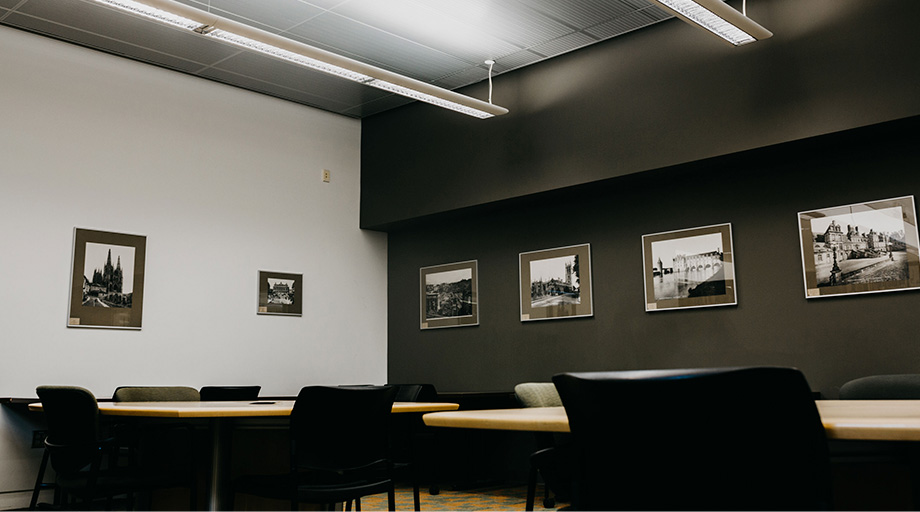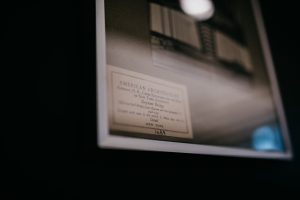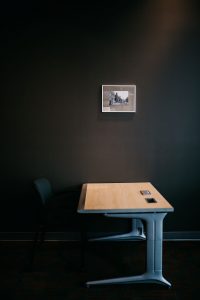
The Music, Art and Architecture (MAA) Library has made space improvements to areas of Level 4, creating additional study spaces and revitalizing the north and south walls with framed reproduction photographs that have a storied history.
Using repurposed furniture from the Nass Reading Room refresh in the Irving K. Barber Learning Centre, MAA Library added study seats and tables at the mezzanine entrance to the Ridington Room. This allowed for the desks to be relocated along the branch’s south wall.

View of “American Architecture” descriptive card on framed photographic reproduction of Bayonne Bridge in New York.
However, architecture buffs will want to check out the space to see what’s new on the walls. Reproduction photographs from the architecture portfolio of the Carnegie Art Reference Set for Colleges now hang along the walls as framed reminders of a time before our current digital age. Before online image searching existed, students and researchers would visit the old Fine Arts Library to borrow from the Reference Set, which consisted of 1,500 high quality reproduction photographs, prints and facsimiles, published by Rudolf Lesch Fine Arts Inc. and donated to dozens of post-secondary institutions across the British Commonwealth between 1927 and 1941 by the Carnegie Corporation of New York.

Desk under framed photographic reprint, located along MAA Library’s south wall on Level 4.
When in 2013 MAA Library deaccessioned the Reference Set from their collection to make room for more up-to-date resources, the Architecture & Planning Librarian Paula Farrar, now the Head of MAA, held on to items from the architecture portfolio. During the Level 4 space refresh, which took place over the summer, Farrar saw the opportunity to put the prints to use once again while adding something new—and old—to the branch’s décor, and by working with Associate University Librarian and IKBLC Director Julie Mitchell, was able to secure the funds needed to frame and hang the prints.
The photographic prints highlight historic structures, such as the Colosseum and the Pantheon, as well as buildings by prominent architects such as Le Corbusier and Frank Lloyd Wright. Each print has its own descriptive label which lists details about the structure, like the architect, construction dates, height or span, as well as a geographic identifier that classifies the structure as, for example, “American” or “Italian Architecture.”
“I absolutely love that we have been able to preserve and now prominently display a piece of our Library history. As formats change and become obsolete, repurposing these collections for display provides current students with a glimpse into the past, and is a testament to how their predecessors completed their studies at UBC,” says Farrar. “Additionally, an unexpected but much appreciated outcome is that the framed images seem to have an anchoring effect on the surrounding furniture. Staff time moving furniture back into place has significantly decreased.”
Visit the website to see the MAA Library’s hours of operation.
This project is part of UBC Library’s strategic direction to inspire with innovative spaces and services.
Learn more about our Strategic Framework.
